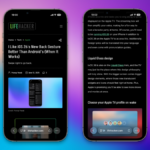Understanding the Challenges of Canceling Subscriptions
In today’s world, membership cancellations have become quite common. Many individuals frequently switch between streaming platforms, enroll in trial offers, and seek better deals for various services, from fitness memberships to entertainment. It seems that as soon as one subscribes to a service, the clock starts ticking towards cancellation.
Most people are aware that terminating subscriptions can be a complicated process, even with new regulations aimed at simplifying it. If attempts to cancel a subscription have felt frustrating or even impossible, it’s likely due to deceptive techniques known as “dark patterns” that companies employ to hinder your departure. In essence, one may find themselves trapped in a so-called ‘cancellation funnel.’
Decoding Cancellation Funnels
When a customer expresses the desire to cancel a service—either by speaking with a customer service representative or clicking on a cancellation button—the company typically activates a retention script. This tactic, often referred to as a “cancellation funnel” or “churn funnel,” is a strategic effort designed to retain you as a paying customer. Organizations invest time and resources into persuading you to rethink your decision, employing subtle strategies to make the cancellation process seem burdensome enough to dissuade those who might not be fully resolute in their choice.
Acknowledging this difficulty is essential; it’s a psychological maneuver known as obstruction. Many people find themselves trying to cancel when they’re short on time—like during a lunch break or late at night when fatigue sets in. Lengthy and complicated cancellation processes often result in individuals abandoning their efforts midway.
However, this is not the sole tactic companies utilize to keep customers from exiting. Below is a collection of prevalent strategies used to discourage cancellations:
Deceptive Tactics to Retain Subscribers
Recognizing the manipulative strategies can significantly aid in fighting back against cancellation resistance:
-
The Inquiry. When intent to cancel is expressed, one of the initial responses from a customer service representative is to ask why you wish to terminate the service. While this may seem innocuous, the representative often has a follow-up script designed to negate your reasoning. For example, if high costs are cited, they might counter with a complimentary month or a temporary discount, instantly changing the equation. This response could lead you to reconsider your cancellation, as it may appear that the service isn’t as costly after all.
The underlying tactic is to provide a temporary solution, hoping you’ll forget about your cancellation intentions when the service returns to its original rates. A more effective approach might be to offer minimal information, simply stating “I want to cancel” or “no reason,” which disrupts their script.
-
Fear of Missing Out (FOMO). Many companies exploit the fear of losing benefits to their advantage. They’re likely to emphasize the positives users currently enjoy from the service, even if those features go unused. This creates a sense of anxiety around forfeiting what one perceives as valuable, causing second thoughts about cancellation.
-
Cooling-off Tactics. Often, companies opt to postpone the cancellation process, offering a pause or a free trial period instead. While this may seem helpful, it’s often a method to delay your decision so that you might lose sight of what initially prompted your desire to cancel.
-
Ambiguous Terminology. Companies frequently use confusing vocabulary—an example of dark patterns. Words such as “continue” or “cancel” can lead to misunderstandings about the required action, making it unclear whether you are confirming your subscription or proceeding with cancellation. This technique often clouds judgment and complicates decision-making.
-
Guilt-Infused Wording. Also known as “confirmshaming,” this tactic employs language that elicits guilt. For instance, offering options such as “Keep my benefits” or “No, I prefer not having benefits” aims to make the user feel foolish for cancelling.
-
Difficult Comparisons. When customer service representatives present convoluted options to retain you, this falls under “comparison prevention.” The goal here is to obscure the real value of their offer through unnecessary complexity, making it challenging to compare the service to alternatives effectively.












